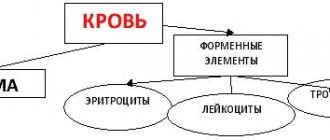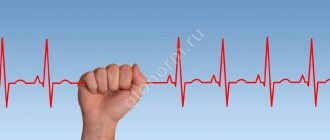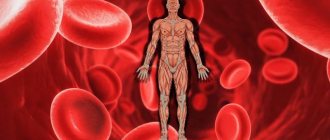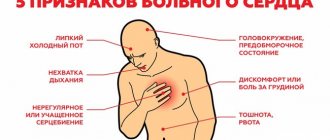If you have ever worked out on cardio equipment at the gym, then most likely you have seen a multi-colored table of heart rate zones on the panel. This chart suggests different heart rate ranges for training depending on your goal. One of these zones is designated the “fat burning zone.” It shows the intensity of the workout at which the body burns more fat than carbohydrates.
Specifically, the fat burning zone is the range of heart rate intensity that burns the most calories from fat. This corresponds to approximately 55-70% of the maximum heart rate. If on a 10-point scale, then 1 is a state of rest, and 10 is work at maximum. So you will have to work on this scale at 5-6 points. That's what those tables on the cardio machines are for.
There are four different heart rate zones, each represented by a percentage of your maximum heart rate (the maximum number of heart beats per minute):
- Low intensity, also known as the “fat burning zone,” is 50-70% of your maximum heart rate. This is usually considered light cardio or a warm-up.
- Moderate intensity of exercise is 70-80% of maximum heart rate. At this pace it becomes more difficult to speak.
- High intensity is 80-90% of your maximum heart rate. At this pace, a person usually moves out of his comfort zone and gets closer to the so-called anaerobic threshold, when the cardiovascular system cannot deliver oxygen to the muscles quickly enough.
- The maximum intensity is 90-100%, that is, training at the maximum of your capabilities. Even the most highly skilled athletes cannot withstand several minutes.
How the body burns fat
The human body converts carbohydrates and fats into energy, which our cells need. Energy production is a constant process, but the source of energy can change depending on lifestyle and diet. In most cases, the body will choose the energy source that is most abundant in the body. For example, if you eat a high-carbohydrate meal immediately before a workout, your body will likely use those carbohydrates for energy, regardless of the intensity of the workout. Energy production is a complex process that occurs every second of every day. And our body is a smart machine that is used to working in the most efficient way. If you perform high-intensity exercise, the body will burn more carbohydrates, but also fats.
Now let's take a closer look at everything you really need to know about your fat burning zone, how to calculate it, and how to best use it in your workouts.
Frequency and timing of cardio training
In this type of physical activity, the load falls on most of the muscles and internal organs. During such training, the heart rate greatly accelerates. During exercise, the athlete inhales large quantities of oxygen, which takes part in the combustion of carbohydrates and fats, which leads to rapid weight loss.
Regular exercise can normalize blood pressure, speed up the digestion process and improve overall health. They also have a beneficial effect on a person’s morale and lift his spirits.
However, in order for aerobic training to be truly beneficial and effective, it must be done correctly. The most important conditions for aerobic exercise are the duration and frequency of its implementation.
The total duration of the entire workout should be thirty minutes. After the body gets used to the new loads, the training time can be increased to one hour. However, not all people have the opportunity to devote an entire hour to studying every day. In this case, trainers advise combining these exercises with normal daily activities. For example, instead of going to work or to the supermarket by car, you can get there by bicycle, or instead of taking the elevator, you can walk up the steps to your apartment.
Training frequency refers to the total number of sessions performed per week. The most effective way is to do four to five workouts every seven days. For those who are just starting to play sports, three classes a week will be enough. At the same time, breaks between trainings at first should be no more than two days.
The most favorable time of day for these activities is considered to be the evening, namely the period from five to seven in the evening. This is justified by the fact that the processes of metabolism and fat burning work best at this time. In the case when you do not have a goal for losing weight, but you need cardio training to increase overall endurance, then you can do it in the morning. However, it should be remembered that in the morning the metabolism is lower, so you should not overdo it with exercise.
Training at 55-70% of your maximum heart rate helps you burn more fat.
The body burns fats and carbohydrates to produce fuel. Cells, through several different biochemical processes, convert these nutrients into a useful form of chemical energy called adenosine triphosphate, or ATP. How much more the body spends to create ATP will depend on the person’s activity level, although other factors such as diet and hormones should not be discounted. Here's why: Our cells need oxygen to convert fat into ATP. When we are at rest and breathing normally, there is enough oxygen and fat is metabolized at a slow and steady rate.
At rest, the body's work is aimed at oxidizing or burning its main source of fuel, namely stored fat. It turns into energy gradually and slowly, making it an ideal source for fueling the brain and body at rest or during leisurely, sedentary work.
The relationship between exercise intensity and heart rate
The relationship between heart rate and exercise intensity is linear. The higher the intensity of the exercise, the higher the heart rate. This is logical, since the more we load the body, the more energy is spent, the more oxygen the body needs, and the more often the heart muscle contracts.
There is a limit to physical activity (each person has his own), upon reaching which the effectiveness of the training decreases. If this limit is exceeded, the heart begins to lack nutrients and oxygen, and, in fact, works at its limit. Heart rate helps determine appropriate exercise levels for different training regimens.
The more intense the workout, the more carbohydrates are burned.
The more intense the cardio load, the faster the process of converting nutrients into ATP should be. And this is easiest to do with carbohydrates, because oxygen is not always needed to convert them into ATP. When there is not enough oxygen, the body begins to store carbohydrates. It follows that as exercise intensity increases, the amount of energy obtained from carbohydrates also increases. But the body continues to burn both fat and carbohydrates at the same time, it’s just that at a certain point more carbohydrates are burned. This turning point is different for each person and can occur differently from day to day, just as it does during training. The heavier the breathing, the less oxygen enters the body and the more carbohydrates are consumed at this moment.
Try the most effective cardio workouts for burning fat at home.
What should the pulse be?
During these workouts, heart rate is the very first indicator of a person’s activity. As a rule, novice athletes do not take into account the state of the body and exceed the permissible loads, expecting to immediately achieve good results. In fact, this is a very wrong and unreasonable approach that can pose a real threat to health.
Both experienced athletes and beginners during cardio training need constant monitoring of the heart rate, that is, its rhythm. In other words, even when performing exercises, a training person must look at his heart rate from time to time, and based on them, select the load for himself.
Also, before starting training, it is important to know your heart rate limits: the lower and upper limits. As for the workouts themselves, you should always take a heart rate monitor with you so that you can independently determine your heart rate.
Intense workouts lead to greater overall fat burning
High-intensity exercise forces multiple systems in the body, including the cardiovascular and respiratory systems, to work faster to keep moving and functioning at the same pace. For example, the heart must beat faster to deliver enough blood, oxygen and nutrients to working muscles; The respiratory system must work harder and faster to breathe at an appropriate pace.
To better understand this, let's compare walking or running. When walking, the source of energy will be fat, but fewer calories will be burned than when jogging the same distance. In addition, you can run a greater distance in the same amount of time than you can walk, which will further increase the number of calories you burn.
Let's look at this statement using the example of a 60 kg woman doing cardio at different intensities:
| Low intensity (60-65% of maximum heart rate) | High intensity (80-85% of maximum heart rate) | |
| Quantity consumed per min. cal. | 4.86 | 6.86 |
| Quantity consumed per min. cal. from fat | 2.43 | 2.7 |
| Quantity consumed per 30 min. cal. | 146 | 206 |
| Quantity consumed per 30 min. cal. from fat | 73 | 82 |
| % calories burned from fat | 50% | 39.85% |
As you can see, a woman burns more calories and more fat when she exercises at higher intensity.
Cardio training for fat burning
Cardio training is an excellent means for the highest quality fat burning, while maintaining muscle mass. Cardio training is not only suitable for those losing weight, but also helps maintain health. The list of such training is quite diverse, so each person can choose the type of activity to their liking.
Be aware of your personal heart rate
In order to be aware of your heart rate, it is worth purchasing a heart rate monitor. This device is quite convenient and allows you to monitor your pulse throughout the entire training process, as well as calculate the load according to the purity of contractions. With age, the maximum heart rate values decrease, and therefore the boundaries of the zones. The general picture can be drawn from this graph.
Rules for training
When performing physical activity, the following features must be taken into account:
- The last large meal should be at least 2 hours before training.
- During exercise, you should drink small sips of water to prevent dehydration.
- Each lesson should consist of a warm-up, a main part and a recovery part. It is very important to exercise taking into account your own heart rate and not overdo it. If you feel unwell, you should reduce the intensity of your workout or stop exercising.
Examples of interval cardio training
Some of the most common aerobic workouts include jogging, fast walking, swimming, dancing, and cardio exercises such as the treadmill, elliptical, and jumping rope. The main advantage of such training is the constant strengthening of the muscles, heart and respiratory system.
Find your heart rate zone
You can calculate the optimal heart rate zone for burning fat using a formula that will help you find the range that suits you. Most often it looks like this:
(220 – Age) * 0.6 or 0.8.
Multiplying by 0.6 gives the lower limit of the range, and multiplying by 0.8 gives the upper limit. This corresponds to 75% of VO2 maximum, which has been scientifically proven to produce the highest rate of fat oxidation.
This formula can be used to calculate your maximum heart rate (subtract your age from 220). The fat burning zone will be in the range of 60-70% of this number. But the cardio zone will be in the range of 71-85%. Beyond 85% and above is the maximum or red zone. Most fitness trackers allow you to enter all the necessary data and get individual heart rate zones, including a fat burning zone, or have a built-in heart rate calculator.
Subjective methods for assessing cardio intensity
If you do not have a heart rate monitor, you can use your personal sensations to determine your heart rate. To do this, during training you should try to pronounce phrases of about 6 words. Training intensity can be determined by zone as follows (rough approximation):
- If you can carry on a conversation without problems, this is a very easy workout.
- If the conversation is carried out with minimal effort, the activity is easy.
- If we say it is possible, but with minor difficulties, the training is above easy.
- If it’s a little harder to pronounce some words, the activity is moderate.
- If it is quite difficult to carry on a conversation, the intensity of the training is very high.
- In case you are unable to talk at all, the training is very intense.
Why is all this needed?
It has been proven that if you train based on your heart rate zone, then you burn more calories from fat tissue. But this does not mean that this approach is more effective for weight loss than HIIT. For a beginner, any exercise will be effective for burning fat, simply because any exercise is better than nothing. The number of calories consumed and burned is more important than the number of beats per minute during training. Not to mention that all these formulas and calculations are more important for professional athletes or those who train regularly. Surely you aren't going to take a VO2 max test every day?! These tests and studies are conducted on athletes for specific training purposes and then released to the masses.
Another argument is that the more calories you burn per day, the more fat you burn, regardless of your heart rate. Simply put, high-intensity workouts burn more calories overall and in less time. Eating a chocolate bar and then hoping to remove excess calories using a treadmill and fat burning zone will not work.
How to track your heart rate during a workout?
- At this stage, we recommend using a simple fitness bracelet - at least it copes well with this task. I recently wrote about how to choose a fitness bracelet with a review of popular models of 2021.
- There are special chest sensors for athletes. Among them, Polar has proven itself well. Such sensors are accurate and are especially useful for those who monitor their heart health. There is a special application with informative graphs about your workout. In our experience, the battery lasts for 1-1.5 years of use 2-3 times a week or 400 workouts. For running, a fitness bracelet is quite enough, but in more difficult conditions - capoeira, squash, martial arts, boxing - give preference to such a sensor.
- Some cardio machines also come with heart rate monitors. To measure your pulse, you need to grab the special handles with both hands. It's hard to say how accurate they are. On an exercise bike, it is not difficult to grab the handle in the right way, but when running, fixing your hands means creating inconvenience for yourself. This will lead to the fact that you will run at a different pace, and your breathing will be lost, because you are literally “running without arms.”
- And, of course, there is a very old-fashioned, but still effective method - manual measurement. We measure your pulse for 10 seconds, feeling the artery in your arm or neck, and multiply by 6.
Example of a cardio training program for a beginner
This program for men and women will help develop endurance, gradually taking you out of your comfort zone.
| Workout/Intensity | Duration | |
| Monday | Interval training for beginners | Up to 21 minutes |
| Tuesday | Walking | 10-20 minutes |
| Wednesday | Rest | |
| Thursday | Cardio training to develop endurance | up to 35 minutes |
| Friday | Rest | |
| Saturday | Interval training for intermediate levels | up to 25 minutes |
| Sunday | Walking | 10-20 minutes |
At the initial stage, you should not worry about how intense the training is, the main thing is that it is on an ongoing basis.
How can you not die of boredom on the track or ellipse?
Admit it, running monotonously for an hour at the same pace is a very tedious task. Fortunately, smart people have been studying physiology for years and have given us great ideas on how to maintain the desired heart rate throughout the entire workout.
We hasten to share with you:
- Group cardio training. If the lesson is designed by professionals, then the whole hour will fly by (but you will be very, very tired).
- Interval training. It has long been proven that interval circuit training is much more effective for fat burning than monotonous aerobics.
- Walking is also a sport. What would you say if we suggested replacing the hour-long cardio after strength training with a brisk walk? Walking quickly with an audiobook in headphones across an uneven landscape with elevation changes and, most importantly, constant change of environment is much more fun than the gray walls of a fitness room. The main thing is to monitor your pulse.










